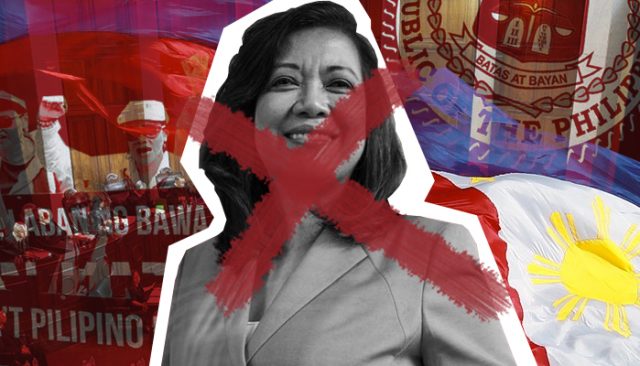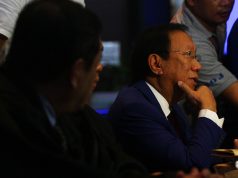
Not long after the Philippines saw its eminent judiciary rocked by the impeachment of its chief justice, another top magistrate has lost her seat in the high court.
The Corona Impeachment
In the days leading up to the Supreme Court’s decision on the quo warranto proceeding against Chief Justice Maria Lourdes Sereno, several recalled the impeachment of her predecessor, the late Renato Corona, which not so long ago rocked the nation.
I hope that the Supreme Court will not make a monumental mistake today. Whatever you decide now will come and bite you in the ass down the line. We're reaping what was done to Corona before. What you do to Sereno, all you impeachable people will reap as well.
Wag gago please.
— Ethel (@econcepcion) May 11, 2018
In May 2012, Renato Corona was removed from his seat as chief of the highest tribunal of the land after 20 out of 23 senators found him guilty of a culpable violation of the constitution, on account of his failure to disclose to the public his statement of assets, liabilities, and net worth as required under Section. 17, Article XI of the 1987 Constitution.
While Sereno’s successor faced a roughly similar predicament, changes in political landscape in the six years since have provided for a much different backdrop to the Sereno controversy.
Different time, different case
Like Corona before her, Sereno has pointed to the Duterte administration undermining the constitutionally guaranteed independence of the judiciary.
While Corona’s ouster was the result of a sole impeachment complaint that was eventually decided by the upper chamber, Sereno’s fate was placed in her colleagues’ hands despite a pending impeachment proceeding at the lower house
As in both cases, administration allies have been blamed for facilitating the ouster.
But even the impeachment court clearly stated that the CJ had no ill gotten wealth. They clearly said it. Pnoy bullied the Corona court and dangled PDAF in front of the senators. https://t.co/Tu4DeJoLao
— BENMD (@docbienevolent) May 11, 2018
The removal of Corona was credited by some to former president Benigno Aquino III, who is still accused of being the moving power behind the ouster.
President Rodrigo Duterte, meanwhile, declared in early April that he and Sereno are now enemies, saying she must leave the Supreme Court.
Of the eight justices who voted in favor of the ouster, six have been asked by Sereno to inhibit from the proceeding on the basis of alleged bias and impartiality: Martires, De Castro, Peralta, Jardeleza, Tijam and Bersamin.
But they didn’t.
Looming constitutional crisis?
Former solicitor general Florin Hilbay, one of the recently deposed magistrate’s most vocal supporters from the legal field, had warned of a constitutional crisis. He proposed a deferment of the quo warranto proceeding in order to avert the crisis.
Another legal expert, retired justice Vicente Mendoza, criticized the quo warranto petition.
“You cannot bring a suit for quo warrant to test the validity of the title or right of a person who is impeachable by quo warranto—except by impeachment,” said Mendoza in an interview with the media earlier.
Ouster attempts not always successful
Once upon a time, chief justices were expected to finish their terms.
The 21st century saw one failed bid to depose a chief justice—Hilario Davide Jr., who was proceeded against on account of his alleged misappropriation of the judiciary development fund.
The Supreme Court eventually junked the impeachment bid on account of procedural infirmities.









